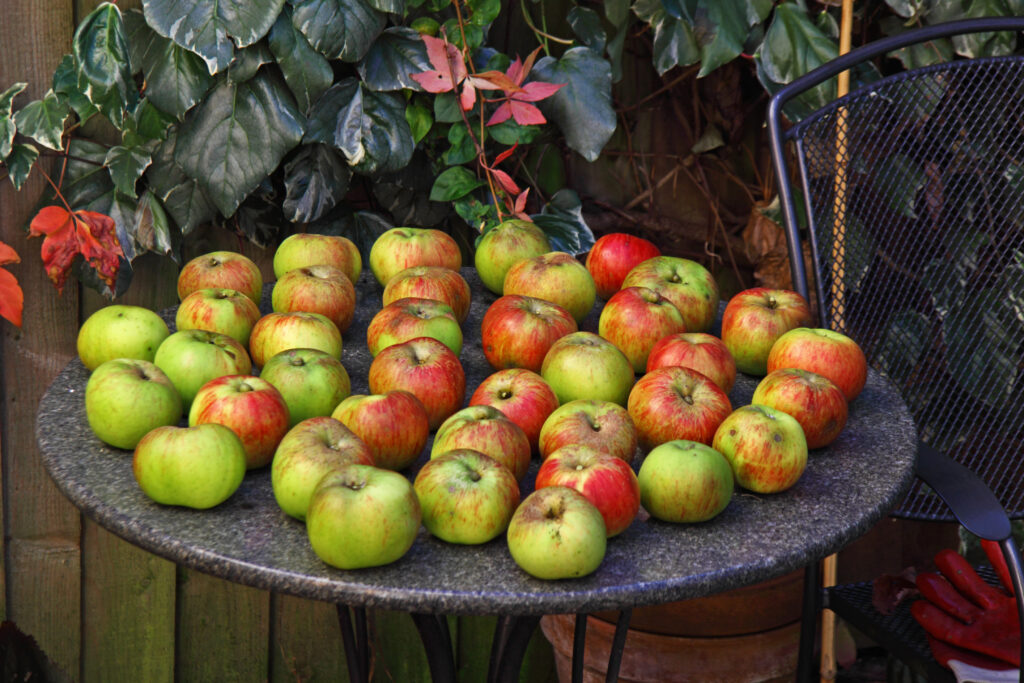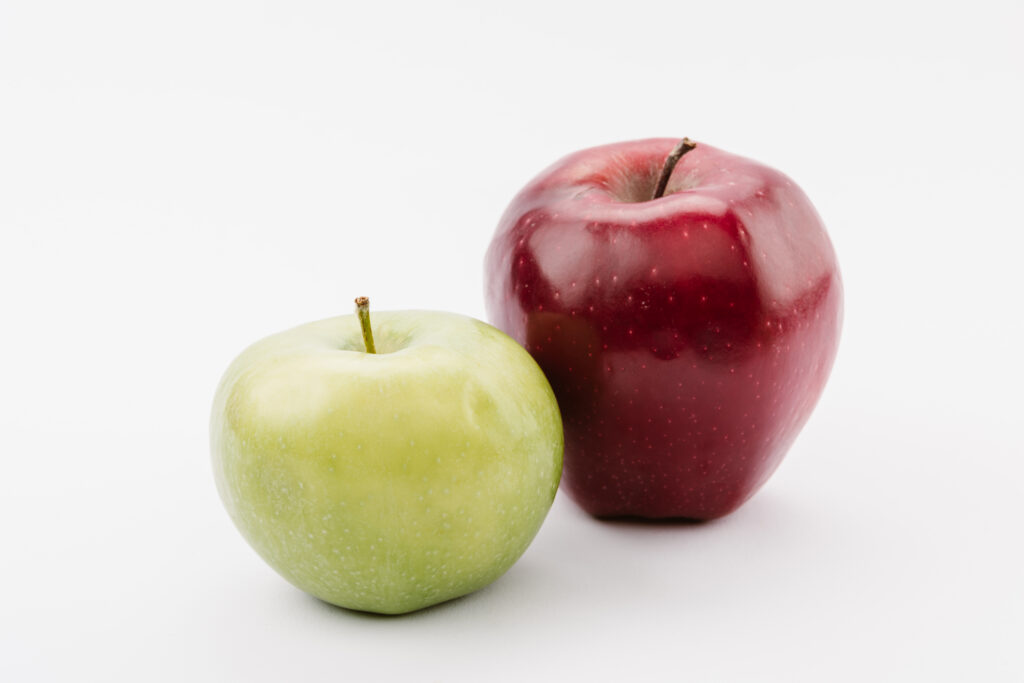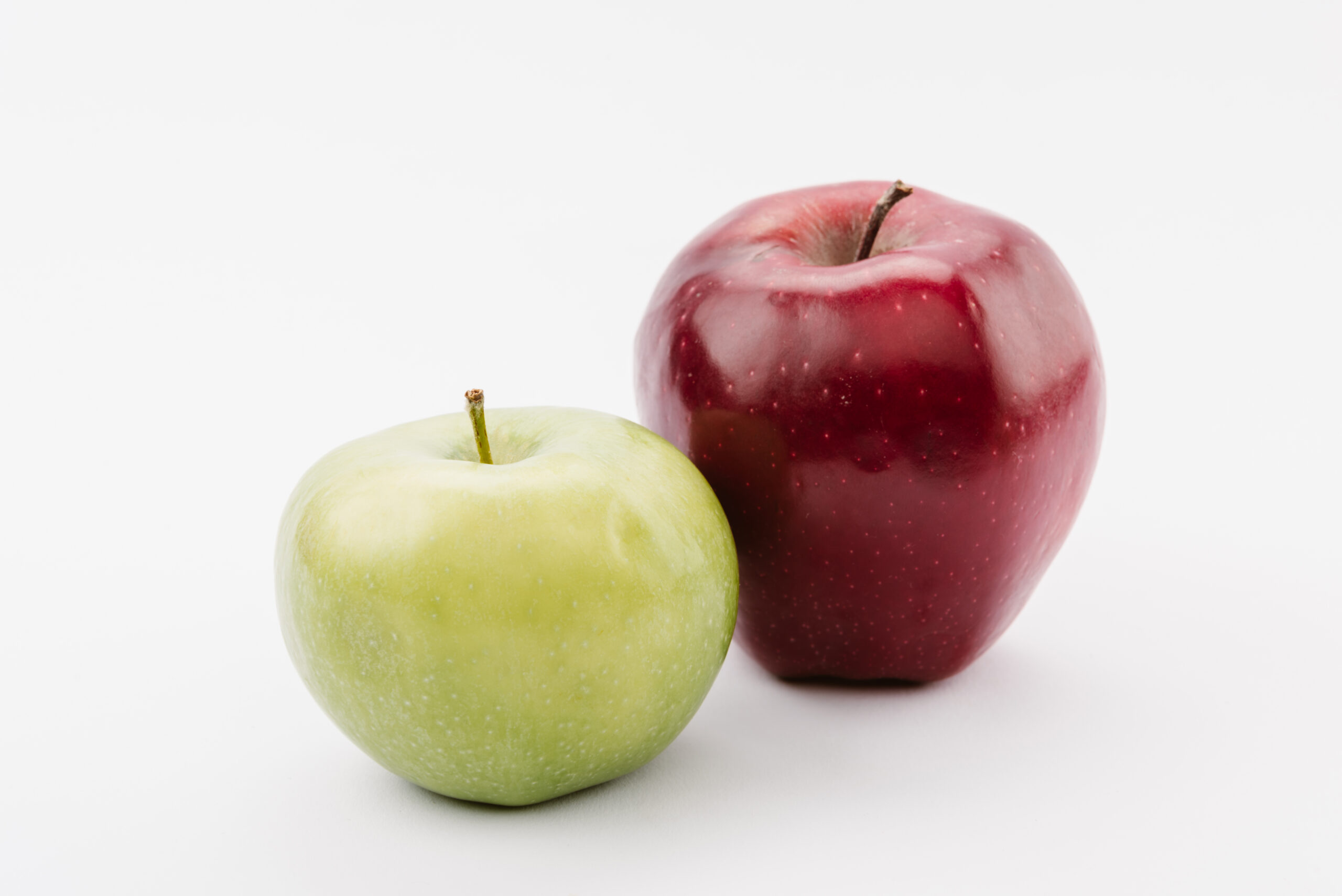Some of the links on this page are affiliate links, which means that Buzzy Kitchen earns commission from purchases made – at absolutely no extra cost to you. Thank you so much for supporting Buzzy Kitchen!
What’s your favourite type or variety of apple? Do you have one? I’m taking a closer look at red apples vs green apples today, bringing you all of the differences, all of the similarities, and hopefully answering all of your apple-themed questions.
Shall we get stuck in?
Are Green Apples Just Unripe Red Apples?
In some cases, yes, green apples are just unripe red apples…
However, this isn’t always the case.
There are many thousands of apples variety these days, each with their own unique texture, taste, colour, growing requirements, and more. More and more varieties and hybrids are added to the list on a regular basis, too.
There are thought to be more than 7,500 eating apples, also known as culinary apples, alone.
Some apple types or varieties are red. Others are green. They can also be shades of yellow, or orange, or any combination of all of the colours together. Patterns can be half-and-half, or mottled, or striped, or speckled.
Opal apples are bright yellow or pale orange.
Mutsu apples are mostly green but with a little reddening.
Winesnap apples are red, tinged with shades of orange, yellow and green.
Granny Smith apples are green, green, green.
And red delicious apples are – as the name suggests – red, red, red. (Mostly.)
Some red apples start out green and then turn red. Others start red and stay red, or turn another shade as the fruits develop and grow.
Different varieties or cultivars start green and turn red, whilst others work in the reverse. Other cultivars have been specifically bred to bring the best of two apple varieties together, so they can carry traits of both parent apples.

What’s the Difference: Red Apples vs Green Apples?
As a general rule, greener apples tend to be less sweet and more tart than red apples.
Red apples, as you might have guessed, are sweeter and less tart.
There are exceptions to these rules, however.
Braeburn apples are often a mix of green and red, and the variety is often thought of as ‘the best of both worlds’. The apples are sweet, like red apples. They also carry some tartness, like green apples.
Red delicious apples, on the other hand, aren’t really all that sweet. In fact, they’re super mild in the flavour department and are often used in dishes that require other flavouring ingredients, such as cinnamon and nutmeg in a pie.
What Apples Are Red and Green UK?
There are a few different varieties of red and green combined apples available (and grown) in the UK. These include:
Adams Pearmain – yellow flesh with red and green skin.
Ambrosia – partly yellow, partly red skin.
Bramley – most common ‘cooking’ apple in the UK, mostly green with red skin.

Chataigner – a French variety, mostly green with red/dark red skin.
Cranberry Pippin – an American variety, mostly yellow with a red tinge.
Holstein – usually orange, often mottled with red and green.
Honeycrisp – red-green mottled skin.
Pazazz – mostly red with a yellow/green tinge.
And these are just a few of them. There are so many new types or varieties and more and more of them are cultivated, created and found every year!
Which Are Healthier: Red Apples vs Green Apples?
There is virtually no difference between the two when looking at the nutritional value of red apples vs green apples.
There are small differences, but as Huffington Post describes:
“The health benefit differences are negligible.”
Huffington Post
This means that the differences are so small and insignificant, there are basically no differences at all.
Red apples are believed to have a slightly higher level of antixoidants, but they also have a slightly higher level of sugar and carbohydrates, too.
Green apples are also believe to contain a slightly higher level of fibre, potassium, protein, vitamin and iron, too — but again, the increase is super small.
Technically, though, this makes green apples the winner, if you’re comparing the two by sugar/carb/calorie content.
Which Are Best: Red Apples vs Green Apples?
The best apple for you will depend on the job you want it to do.
Bramley apples, for example, are quite tart apples, usually green in colour, but also patchy-red in many cases. These apples are great for cooking, but require sugar or similar ingredients to help reduce the bitter-tartness and sweeten things up.
Bramley apples are the most common type of cooking apple in the UK, but they are not commonly eaten raw because of how tart they are.
Granny smith apples, on the other hand, are regularly eaten raw. Even though they are green and quite tart, they are also super juicy and refreshing, especially in the summer, with a crispy white flesh.
Pink lady apples need a very specific level of sweet and tart in order to be called the name. A reddish-pink variety, it is crispy and tart when you first bite into it, with a great sweetness that follows. Pink lady apples are commonly eaten raw in the UK.
There are many different types and varieties of apples. The right and ‘best’ type for you will suit whatever you’re going to do with it.
If you plan to eat it raw, choose a sweet and red Fuji.
If you plan to cook with it, I’d go with Bramley apples, personally.
As a final note, you will also want to consider availability of different varieties of apples. They are not all available all-year-long, and some of them are rarer than others, especially in the UK.

Which Are the Sweetest Apples?
If you want sweet apples that are great for eating raw, you should look at apple varieties such as Juici, Fuji, Gala and Ambrosia. These are all red apples, following the red-is-sweet, green-is-tart pattern.
If you’d prefer a crisper, tarter flavour, look at varieties such as empire, granny smith, Pacific rose, and McIntosh apples.
